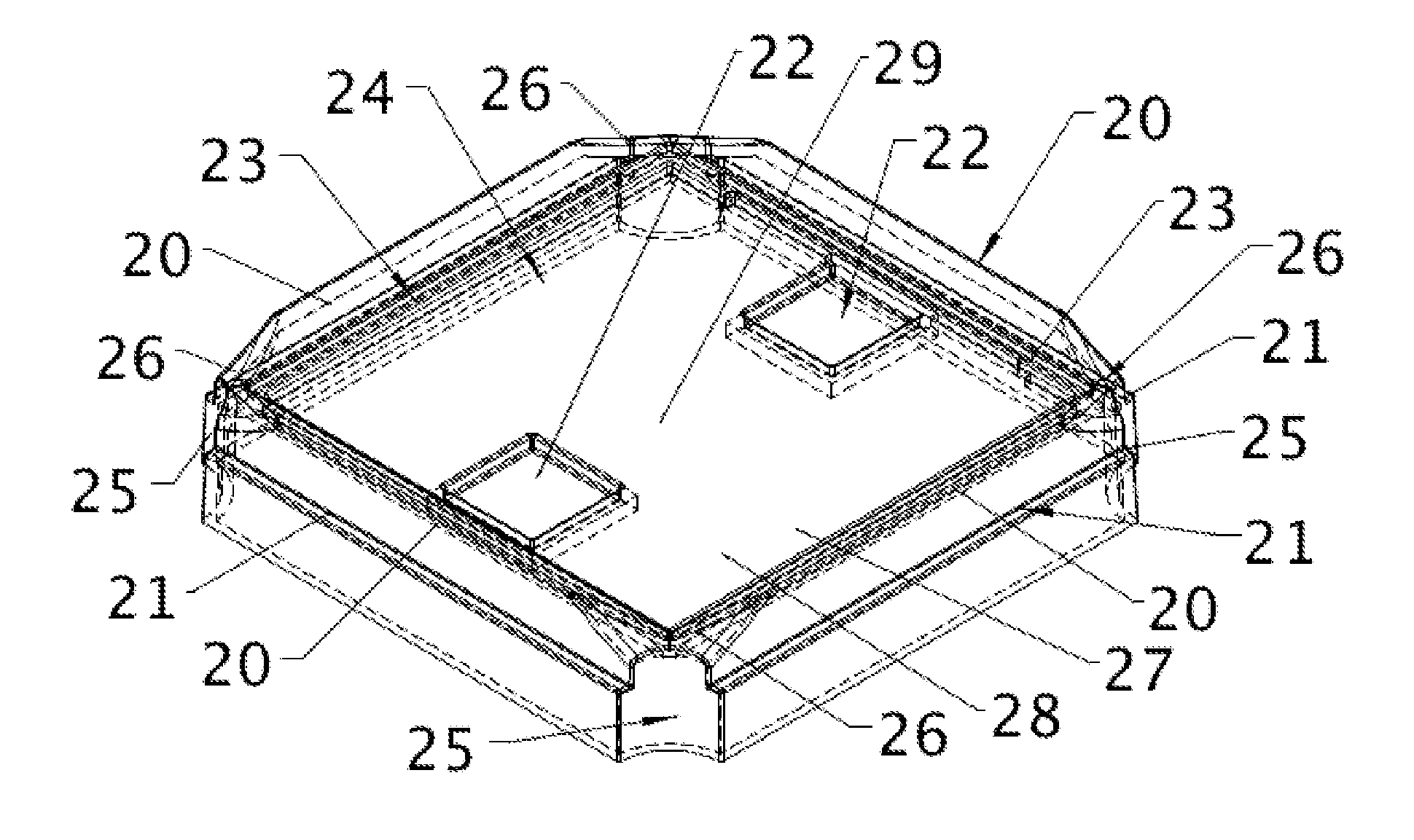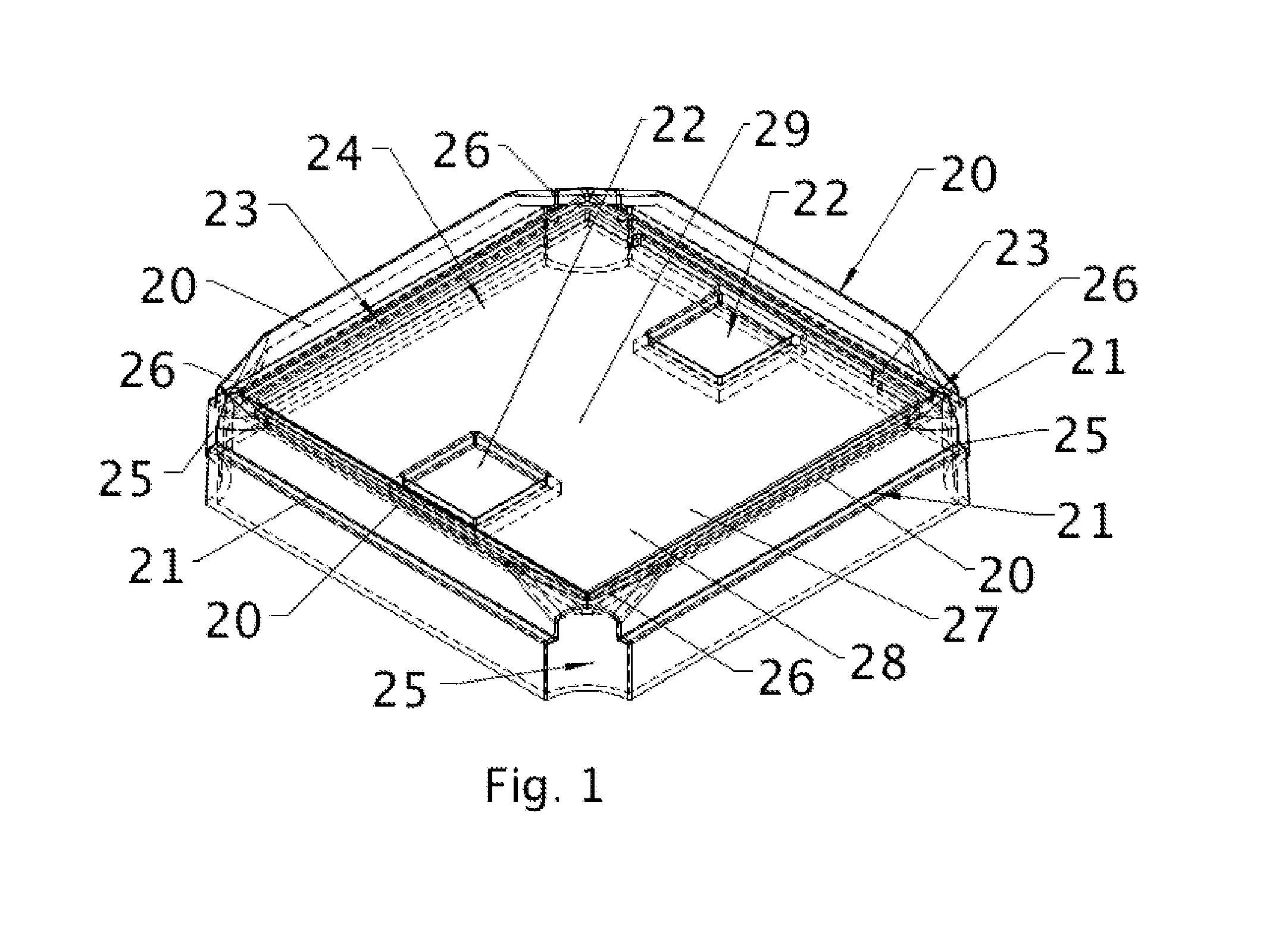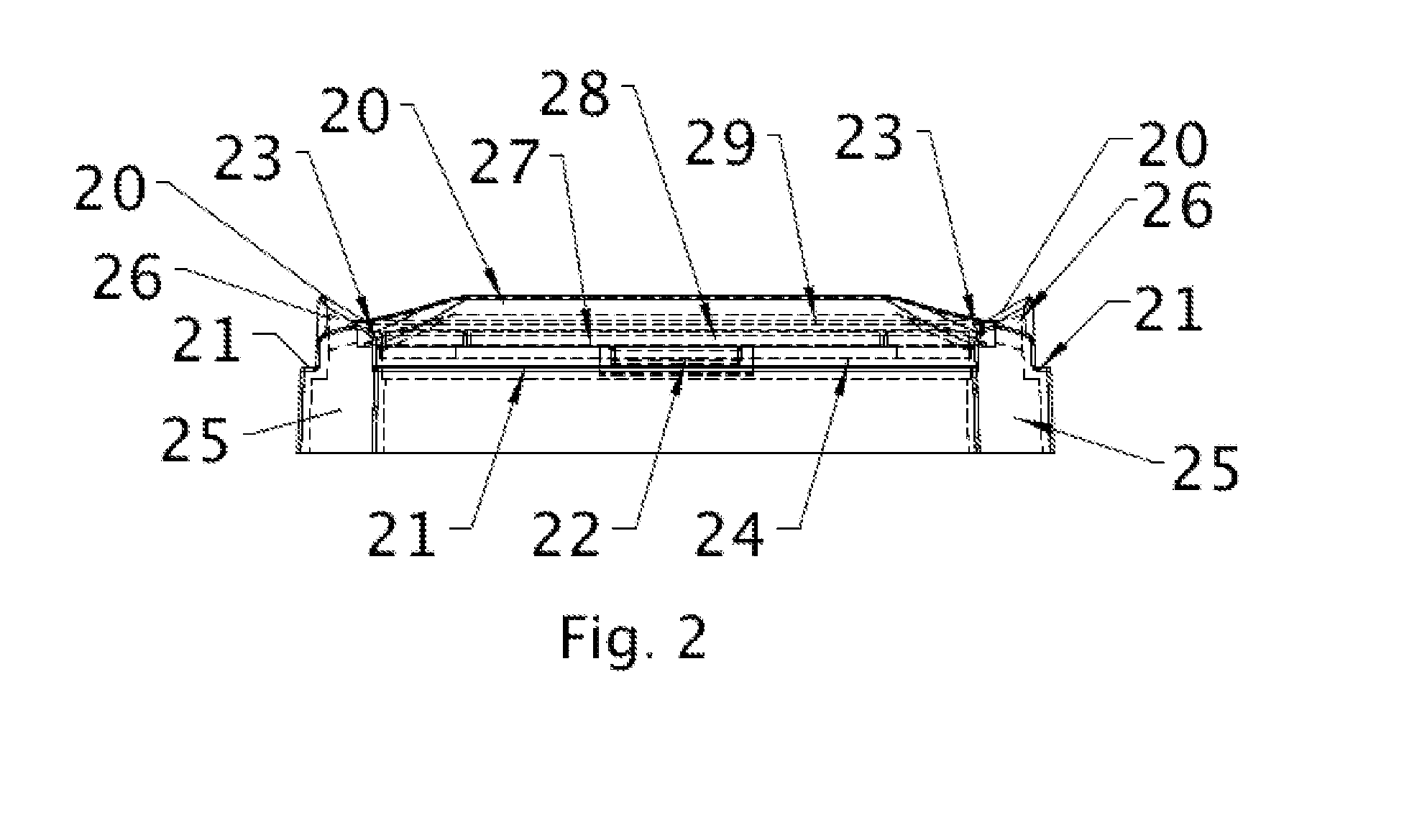Self-cleaning solar panel design
- Summary
- Abstract
- Description
- Claims
- Application Information
AI Technical Summary
Benefits of technology
Problems solved by technology
Method used
Image
Examples
Embodiment Construction
[0020]In the present disclosure, numerous specific details are provided, such as examples of module, components, and method, to provide a thorough understanding of embodiments of the invention. Persons of ordinary skill in the art will recognize, however, that the invention can be practiced without one or more of the specific details. In other instances, well-known details are not shown.
[0021]FIG. 1 shows a top left view of a self-cleaning photovoltaic module in accordance with the complex design requirements of the present invention. A self-cleaning photovoltaic module consists of dividing fins 20 which rise upward from the transparent protective element 29 and are swept at an outward angle of approximately thirty degrees. The fins 20 form a dam like structure, throughout the perimeter of the photovoltaic module and essentially help in preventing the flow of water collected from one self-cleaning module to another self-cleaning module. The water collected on self-cleaning photovolt...
PUM
 Login to View More
Login to View More Abstract
Description
Claims
Application Information
 Login to View More
Login to View More - R&D Engineer
- R&D Manager
- IP Professional
- Industry Leading Data Capabilities
- Powerful AI technology
- Patent DNA Extraction
Browse by: Latest US Patents, China's latest patents, Technical Efficacy Thesaurus, Application Domain, Technology Topic, Popular Technical Reports.
© 2024 PatSnap. All rights reserved.Legal|Privacy policy|Modern Slavery Act Transparency Statement|Sitemap|About US| Contact US: help@patsnap.com










